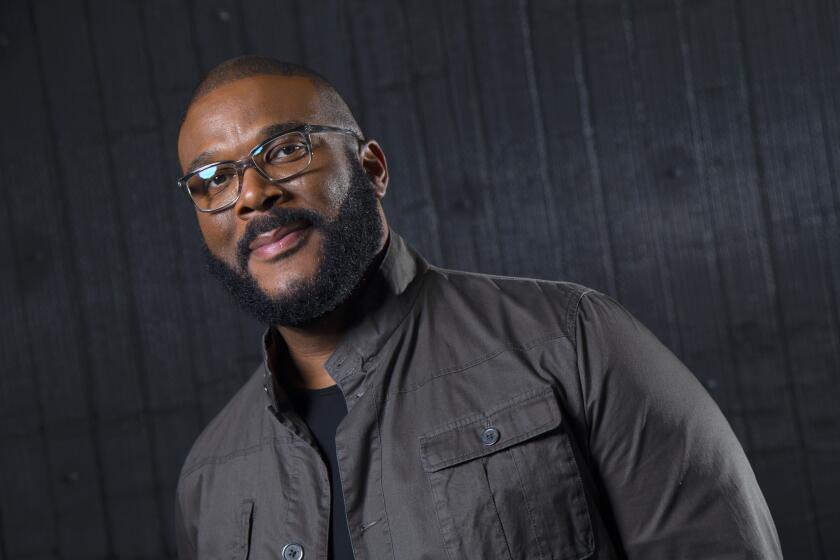MUSIC REVIEW : Fill-in Soviet Maestro Did Not Disappoint Symphony Audience
- Share via
SAN DIEGO — The atmosphere at Symphony Hall was charged with unusual expectancy Thursday evening. A pair of exotic contemporary concertos awaited the San Diego Symphony’s typically unadventurous audience, and the podium guest was Jansoug Kakhidze, the Soviet Georgian conductor who made an impressive debut last month in the “Boris Godunov” production that opened the Soviet arts festival. Kakhidze was a last-minute replacement for Pavel Kogan, whose health prevented him from leaving the Soviet Union.
The elegant, slightly stern maestro from Tbilisi did not disappoint. From the daunting complexities of the two modern scores--Rodion Shchedrin’s Second Piano Concerto and John Corigliano’s Clarinet Concerto--to the impressionistic subtleties of Mussorgsky’s “Pictures at an Exhibition,” Kakhidze shaped each musical moment with keen insight and passionate conviction.
His total engagement with the music and the symphony’s vital response made this concert, the orchestra’s second installment in its Soviet arts festival offerings, exceptionally rewarding.
Fortunately, Kakhidze was flanked by two virtuosos whose technical brilliance helped assuage the audience’s discomfort with the prickly idiom of the recent concertos. Soviet pianist Nicolai Petrov’s muscular technique and firm grasp of Shchedrin’s aggressive, neoclassical concerto proved quite spectacular. This West Coast premiere of the 1967 work only underscored how little American audiences know of modern Soviet music beyond Shostakovich.
The young American clarinetist Richard Stoltzman made a stunning case for Corigliano’s 1977 Clarinet Concerto. One minute Stoltzman was coaxing breathy overtones from his instrument; the next he was making it scream like a banshee. Whatever the work’s quirky requirements, he exercised complete control and unerring stylistic congruence. He caressed the lyrical themes of the elegiac middle movement and played a touching pianissimo duet with concertmaster Igor Gruppman.
Although these two concertos represent two contrasting national traditions--Corigliano embodies a judiciously nuanced American cerebral approach and Shchedrin catches a hard-driven Soviet athleticism--they are similar in their structural theory. Like the grandiose, audience-pleasing Romantic concertos, these two concertos make the orchestra subservient to the soloist’s extravagant virtuosity.
The Corigliano work required the placement of five French horn players around the perimeter of the audience. Their oscillating sonic clusters added a unique dimension to the concerto, which also startled many complacent patrons. It should be noted that, although Kakhidze had to learn this complex score in a week’s time, his direction was both masterful and stylistically sympathetic.
The familiar Mussorgsky piece replaced what would have been another West Coast premiere, Andrei Petrov’s “The Master and Margarita.” If the orchestra seemed to struggle to give Kakhidze everything he wanted in the Mussorgsky, they did pick up his sense of urgency and unfailing forward momentum. The string sections displayed unusual precision and balance, although the horns sounded thin in the less than stentorian passages.
To open the concert, Kakhidze led the brass and percussion in Copland’s “Fanfare for the Common Man.” It had more focus than it did a month ago, when guest conductor Lynn Harrell used it to open a concert, but this time the absence of former principal trumpet Calvin Price left a noticeable hole in that section.
This concert (minus the Corigliano concerto) will be repeated at 2 p.m. today at Seaport Village and at 4:30 Sunday at Fallbrook’s Bowers Auditorium.
More to Read
The biggest entertainment stories
Get our big stories about Hollywood, film, television, music, arts, culture and more right in your inbox as soon as they publish.
You may occasionally receive promotional content from the Los Angeles Times.










